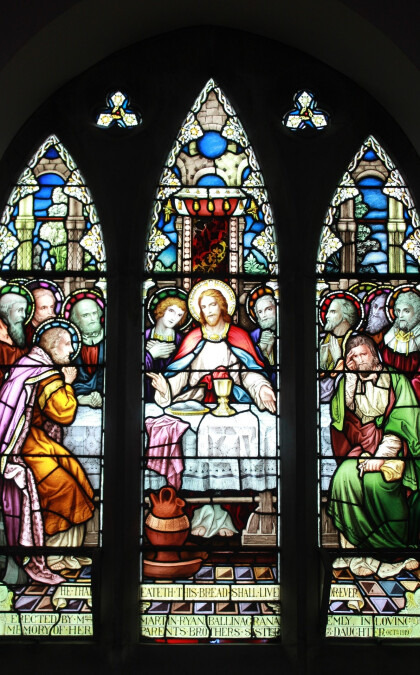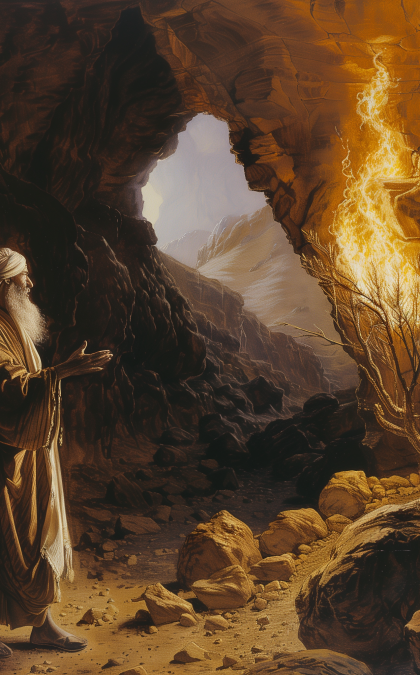The 12 Disciples of Jesus
Jesus had many followers during His ministry on Earth. But twelve of them stood out—chosen personally by Him to be His closest companions and witnesses of His teaching, miracles, death, and resurrection. These disciples of Jesus weren’t just students; they were friends, leaders, missionaries, and ultimately, martyrs—except for one.

Who were Jesus' Disciples?
After Jesus’ resurrection and ascension, the apostles went out into the world with a mission: to share the Good News and make disciples of all nations (Matthew 28:19). But who were these men? What do their names mean? How did they die? And where are their remains today?
Let’s take a closer look at the disciples of Jesus.
THOMAS
MATTHEW
JAMES THE GREATER
JUDAS THADDEUS
SIMON THE ZEALOT
JUDAS ISCARIOT
BARTHOLOMEW
PHILIP
JOHN
JAMES THE LESSER
ANDREW
PETER
THOMAS

Name Meaning: Twin (Aramaic: Ta’oma)
Former Occupation: Unknown
Manner of Death: Speared in India
Remains (Relics) Location: Ortona, Italy
Thomas comes from the Aramaic name Ta’oma meaning twin, however, the meaning of the nickname is unclear. According to the Syrian Christian tradition, Saint Thomas was preaching at Saint Thomas Mount in Chennai, India around the year 72 A.D., when a group of angered locals martyred him with a spear. His remains can be found in the Basilica of Saint Thomas the Apostle in Ortona, Italy.
MATTHEW

Name Meaning: Gift of Yahweh
Former Occupation: Tax collector
Manner of Death: Stabbed in Ethiopia
Remains (Relics) Location: Cathedral of Salerno, Italy
He is also called Levi, a tax collector, who later became one of the four Gospel writers. Matthew comes from the Greek Matthaios for the Hebrew name Mattityahu, meaning gift of Yahweh. According to tradition, the tax collector-turned-missionary was martyred in Ethiopia, where he was stabbed in the back by an assassin sent by King Hertacus after he criticized the king’s morals. His remains can be found in the Cathedral of Salerno in Salerno, Italy.
JAMES THE GREATER

Name Meaning: Supplanter (Hebrew: Ya’aqov)
Former Occupation: Fisherman
Manner of Death: Beheaded by sword
Remains (Relics) Location: Santiago de Compostela, Spain
The name James is derived from the Hebrew name ya’aqov for the Old Testament Patriarch Jacob. Acts 12:2 says that James the Greater was killed with a sword. The newly-appointed governor of Judea, Herod Agrippa, decided to gain favor with the Romans by persecuting leaders of Christianity. After James was arrested and led to the place of execution, his unnamed accuser was moved by his courage. He not only repented and converted on the spot but asked to be executed alongside James. The Roman executioners obliged, and both men were beheaded simultaneously. His remains can be found in Saint James Church in Compostela, Spain.
JUDAS THADDEUS

Name Meaning: Praised
Former Occupation: Unknown
Manner of Death: Killed with arrows/axe
Remains (Relics) Location: St. Peter’s Basilica, Rome
Judas stems from the Hebrew Yehudah meaning ‘praised’. According to tradition, Saint Jude Thaddeus was martyred around the year 65 A.D. in Beirut and his body filled with arrows. He is often pictured with an ax, a symbol of his martyrdom and the way in which he was killed. His remains can be found at Saint Peter’s Basilica in Italy.
SIMON THE ZEALOT

Name Meaning: He has heard
Former Occupation: Zealot
Manner of Death: Crucified in Britain
Remains (Relics) Location: Vatican City
Simon comes from the Hebrew name Shim’on meaning ‘he has heard’. Saint Simon is one of the most obscure apostles of Jesus Christ. It is thought he preached in Mauritania on the west coast of Africa, and then went to England, where he was crucified either around the year 65 A.D. or 107 A.D. His remains can be found at the Altar of the Crucifixion in Vatican City.
JUDAS ISCARIOT

Name Meaning: Praised
Former Occupation: Treasurer
Manner of Death: Suicide after betrayal
Remains (Relics) Location: Unknown
Judas stems from the Hebrew Yehudah meaning ‘praised’. Judas Iscariot committed suicide following his betrayal of Jesus Christ, and the whereabouts of his remains are unknown.
BARTHOLOMEW

Name Meaning: Son of Talmai
Former Occupation: Unknown
Manner of Death: Flayed and beheaded
Remains (Relics) Location: Church of St. Bartholomew, Rome
He is probably the same person as Nathanael. Bartholomew comes from Bartholomaios, the Greek form of an Aramaic name meaning son of Talmai. According to tradition, he preached in several countries, including India, where he translated the Gospel of Matthew for believers. In one account, “impatient idolaters” beat Bartholomew and then crucified him. In another account, he was flayed alive and then beheaded. His remains can be found in Saint Bartholomew Church in Rome.
PHILIP

Name Meaning: Friend of horses
Former Occupation: Unknown
Manner of Death: Crucified in Heliopolis
Remains (Relics) Location: Basilica of the Holy Apostles, Rome
Philip stems from the Greek name Philippos meaning friend of horses. He became a missionary to Greece, Syria, and Phrygia. Eventually, he traveled to the Egyptian city of Heliopolis, where he was whipped, thrown into prison, and then crucified around 54 A.D. His remains can be found in the Holy Apostles Basilica in Rome.
JOHN

Name Meaning: Yahweh is gracious
Former Occupation: Fisherman
Manner of Death: Natural death
Remains (Relics) Location: Basilica of St. John, Ephesus, Turkey
Brother of James. Later, he became one of the four Gospel writers. John is derived from the Hebrew name Yochanan which means ‘Yahweh is gracious’. He is the only apostle to have died a natural death, passing peacefully in his old age around the year 100 A.D. on Patmos, Greece. His remains can be found in the Basilica of Saint John in Ephesus, Turkey.
JAMES THE LESSER

Name Meaning: Supplanter
Former Occupation: Unknown
Manner of Death: Stoned and clubbed
Remains (Relics) Location: Basilica of the Holy Apostles, Rome
James is derived from the Hebrew name ya’aqov for the Old Testament Patriarch Jacob. Less is known about Saint James the Lesser except that he was one of the oldest apostles. At the age of 94, he was beaten and stoned by persecutors, and then was killed from a blow to the head with a club. His remains can be found at the Holy Apostles Basilica in Rome.
ANDREW

Name Meaning: Manly (Greek: Andreas)
Former Occupation: Fisherman
Manner of Death: Crucified on X-shaped cross
Remains (Relics) Location: Amalfi Cathedral, Italy
Andrew comes from the Greek name Andreas, itself derived from the Greek word Andreios meaning ‘masculine’. Andrew traveled to Patras in western Greece in 69 A.D., where the Roman proconsul Aegeates tried to convince him to forsake Christianity so that he would not have to execute him. Not renouncing his faith, Aegeates crucified him to an X shaped cross (the origin of the saltire’s shape), tying him instead of using nails to prolong his suffering. His remains can be found in the Cathedral of Amalfi in Amalfi, Italy.
PETER

Name Meaning: Rock (Greek: Petros)
Former Occupation: Fisherman
Manner of Death: Crucified upside down
Remains (Relics) Location: St. Peter’s Basilica, Rome
Simon later became Peter. Peter stems from the Greek Petros meaning ‘rock’. Jesus gave him the name Cephas, which means ‘stone’ in Aramaic. He was martyred by crucifixion sometime around the year 64 A.D. during the Great Fire in Rome under the rule of Emperor Nero. Tradition says he requested to be crucified upside-down, because he saw himself unworthy to die the same way as Christ. His remains can be found in Saint Peter’s Basilica in Rome.
Interesting Facts About Jesus' Disciples

Peter, James, and John formed Jesus’ inner circle, present at key moments like the Transfiguration and Gethsemane.
Many disciples were fishermen, others were tax collectors or political radicals (Zealots).
Most met violent deaths, remaining faithful to the end.
Only John died of natural causes.
Their burial sites are honored throughout Europe, from Italy to Turkey and Spain.
The Great Commission (Matthew 28:19) drove their missionary journeys across Africa, Asia, and Europe.
Frequently Asked Questions About the Disciples
What’s the difference between a disciple and an apostle?
How did the apostles die?
Who replaced Judas Iscariot?
Where are the remains of the disciples now?
What does the Bible say about the mission of Jesus' disciples?
What’s the difference between a disciple and an apostle?
A disciple is a student or follower. An apostle is one who is sent out. The twelve were both—disciples who became apostles after Jesus sent them into the world.
How did the apostles die?
Most of them were martyred for their faith. Methods included crucifixion, beheading, stoning, and spearing.
Who replaced Judas Iscariot?
Matthias was chosen to replace Judas Iscariot after his death (Acts 1:26), though he’s not always listed among the “original twelve.”
Where are the remains of the disciples now?
Many are believed to be buried in European cathedrals—Rome, Salerno, Compostela, Ephesus, and more.
What does the Bible say about the mission of Jesus' disciples?
Jesus gave them the Great Commission: “Go and make disciples of all nations” (Matthew 28:19–20). This became the foundation of the global Church.
Want to Grow in your Faith like the Disciples did?
Get a daily devotional per email to help you stay rooted in God’s truth, experience His presence, and walk with Him day by day. Subscribe here.
.jpg)
Walk with Jesus
In 7 Days with Jesus: Walk with Jesus, travel with Jesus and His disciples while studying His life and teachings.



